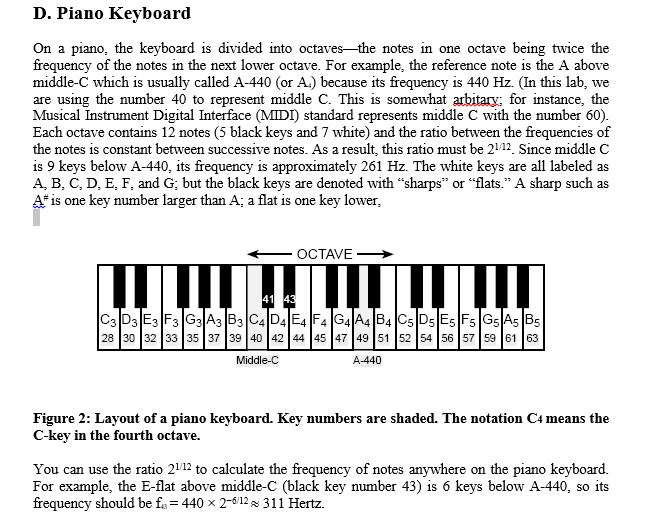

To turn a quarter note into an eighth note, add dot 6. These dots are used to form the remaining notes similar to adding stems to notes on a print staff. We have already discussed how the eighth note is formed using exclusively the upper part of the cell, but we still have two unused dots. Or do we? Actually, learning these remaining note symbols is a downhill climb by remembering a simple fact. This means we have twenty-one notes left to learn quarter note, half note and whole note.
#Notes in an octave how to#
Now that we have learned how to read the eighth note scale, we have officially learned seven braille music signs. The first scale step in solfege is Do, which starts with D. Another way to remember the starting note is to refer to Solfege.

These resemble the same dot formations as the literary I and J. The only exceptions to this rule are the last two notes of the scale A and B. From here, the scale simply follows the alphabet one letter behind literary braille. In other words, a braille music eighth note C looks the same as a D in literary braille. The trick to remember is that the first note C in the scale is one letter behind the English alphabet. The eighth notes only utilize the upper part of the cell meaning the top and middle dots (dots 1, 2, 4 and 5.) If one already knows how to read basic literary English braille, learning the eighth note scale is quite easy. However, mastering these is not as difficult as it may seem.Īs with most braille codes outside of computer braille, a typical braille cell has six dots. Learning to read these can seem a bit daunting to the student, as there are twenty-eight different note signs to memorize. Today, the braille music system has undergone multiple revisions, but the one thing that has never changed since its development nearly 200 years ago is the formation of notes.
#Notes in an octave code#
This sneaky activity inspired Louis to enhance the code for his music students so they could learn music in a similar way to the sighted world. Louis and his friends used a device we now refer to as the slate and stylus to write these messages by punching the dots into the paper from the backside.

They took a system of raised dots that was used by the army in the trenches to avoid being seen by the enemy camp. While there, Louis and some other students came up with a clever way of communicating to each other without the need for lights or speech when they were supposed to be asleep. The accident resulted in immediate blindness in that eye, and the infection soon spread to his other eye.įortunately, there was a school for the blind in his home country in Paris. One day while alone in his father’s workshop, Louis was playing with an awl when the tool slipped out of his hand and shot a direct hit into his eye. His father was a cobbler, and young Louis enjoyed pretending to help his father fix shoes. He started life as most of us did born with perfect sight and a bright future ahead. When Louis Braille invented the braille music code, he probably did not expect his system to be a worldwide development that would forever change the course for the education of the blind community. The following is a guest post by Braille Music Librarian Timothy Jones.


 0 kommentar(er)
0 kommentar(er)
